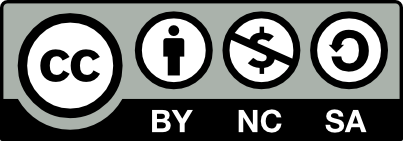Human foetal brain self-organises into long-term expanding organoids

Simulating human brain development accurately has the potential to improve our understanding of human brain development and various brain disorders. Although animal models play an indispensable role in the field of developmental neurobiology, inherent species differences limit their capacity to replicate the intricacies of specific human diseases.1 In light of these limitations, recent advancements in the technology of brain organoids present a promising avenue for investigating the development and functionality of the human brain. Regional brain organoids, such as those derived from dorsal and ventral forebrain, maintain their regional identity and recapitulate many aspects of early development, while whole brain organoids develop various discrete brain regions but may not fully replicate the regional specificity seen in vivo.2 However, the traditional pluripotent stem cell–derived organoid models, which rely on complex molecular induction processes, have difficulty fully replicating the complex layered organisation, temporally extended developmental processes, and increased cellular diversity of human brain development.3 Thus, how to improve the research methods to replicate the processes of brain development accurately remains a significant challenge. Notably, tissue stem cell–derived organoids with cell–intrinsic properties and physiology have the capacity for long–term self–renewal and expansion, making them an ideal model for studying the characteristics of tissues and disease states.4
Recently, in Cell, Hendriks et al.5 from the Princess Máxima Center for Pediatric Oncology successfully developed self–organising foetal brain organoid (FeBOs) from human foetal brain tissue (Figure 1). Such FeBOs can self–organise and be expanded over long time periods under specific culture conditions, forming three–dimensional structures with tissue–like architecture. They are capable of producing extracellular matrix niche, which mimics the microenvironment of real brain tissue and maintains interactions between cells. FeBOs, with distinct molecular characteristics and cellular diversity, can retain their original regional identity. Furthermore, through CRISPR (clustered, regularly interspaced, short palindromic repeats)–Cas9 (CRISPR–associated protein) gene editing technology, researchers can genetically modify FeBOs, providing a new avenue for establishing disease models.
Figure 1.

Figure 1. Schematic representation of the establishment, characterisation, and applications of human foetal brain organoids (FeBOs). Individual foetal brain tissue fragments derived from healthy human foetal brain tissues can self–organise into independent FeBOs in vitro. Comparisons across cellular composition, molecular markers, and regional identity confirmed the similarity between FeBOs and tissue. Their tissue–like characteristics in morphology and function render FeBOs a valuable tool for studying human brain development and disease. To maintain long–term expansion and tissue integrity, FeBOs are capable of producing a tissue–like extracellular matrix (ECM) niche, which is essential for their expansion and maintenance of structural integrity. Under different morphogenetic stimuli, FeBOs display sensitivity and can respond by engaging in region–specific gene expression. Through CRISPR editing, mutant FeBOs with defined genetic makeups can be generated as bottom–up cancer models and systems for mutation–drug sensitivity assays. Reprinted from Hendriks et al.5 BMP: bone morphogenetic protein; RNA–seq: RNA sequencing; Wnt: wingless–related integration.
To explore the capacity of the human foetal brain to self–organise into organoids in vitro, researchers utilize healthy human foetal brain tissues from gestational weeks 12 to 15. These tissues were dissected into small fragments, with a subset utilised for RNA isolation, followed by quantitative polymerase chain reaction and further immunofluorescence analysis to assign the tissue’s regional identity. Retaining stem cell properties from the original tissue, these tissues gradually formed three–dimensional structures with defined borders in a serum–free and extracellular matrix–free medium supplemented with epidermal growth factor, fibroblast growth factor 2, and fibroblast growth factor 10. Even after prolonged culture periods, each single FeBO piece can consistently reform entire organoids with highly robust cellular heterogeneity and organisation, characterised by progenitor cells localising to the organoid periphery while neurogenesis occurs toward the center while remaining viable. Furthermore, the molecular profiles found in these FeBOs reliably recapitulated those observed in vivo. Importantly, FeBOs maintain a developing tissue–like extracellular matrix niche, demonstrating their ability to support self–expansion and maturation without reliance on exogenous matrices. The assessment of transcriptomic data of FeBOs through principal component analysis clustering, which revealed several main populations, demonstrated that dorsal and ventral forebrain FeBOs could be distinguished and clustered separately based on their regional origins, highlighting regional specificity. This regional specificity was further underscored by the robust response of dorsal forebrain FeBOs to bone morphogenetic protein and wingless–related integration signalling, pathways crucial for upregulating genes associated with dorsal fate and cortical development. These signalling molecule responses indicated that FeBOs can actively engage with factors vital for brain development while preserving various characteristics specific to their respective regions.
CRISPR–Cas9 technology, as a powerful gene editing tool, demonstrates broad application potential across various fields. In the realm of xenotransplantation, through precise gene knockout or knock–in, this technology facilitated accurate genome modification in donor animals to reduce the immune rejection response triggered in the recipient after organ transplantation.6 Furthermore, by introducing genetic mutations through CRISPR–Cas9 technology, researchers are able to better understand disease mechanisms and evaluate drug responses. Specifically, CRISPR–Cas9 technology has enabled the generation of disease models in FeBOs by introducing mutations in genes such as RAB3GAP2, linked to microcephaly, and tumour protein 53 (TP53), phosphatase and tensin homolog deleted on chromosome ten (PTEN), and neurofibromatosis type 1 (NF1), which are associated with brain cancer.7 Compared to the variability in tumour modeling with pluripotent stem cell–derived brain organoids, a single CRISPR–mutated FeBO enables the visualisation of the impact of cancer gene mutations in individual cells within otherwise healthy developing brains. Based on this, mutated FeBOs exhibit different responses to specific drugs compared to wild–type FeBOs, indicating a correlation between genetic mutations and drug sensitivity. Therefore, FeBOs can be utilised to investigate the association between genetic mutations and drug sensitivity, as well as to screen for anticancer drugs targeting specific genetic mutations. This highlights the potential of FeBOs as a valuable platform for exploring cell–autonomous and morphogen–dependent mechanisms of cell and positional identity specification. Moreover, their ability to mimic human brain development and study regional specificity offers a new perspective for neuroscience research and has the potential to advance the field of brain disease treatment.
Though FeBOs offer innovative opportunities for brain research, their application is contingent upon the availability of foetal tissue. Most fragments were of telencephalic origin, which may limit the representativeness of the FeBOs for other regions of the brain. Given the absence of sensory inputs, outbound connections, and complex brain region interactions, FeBOs would not possess consciousness or similar perceptive properties. Investigations into the derivation of FeBOs from brain regions beyond the forebrain and the diverse requirements for specific signalling molecules to maintain or strengthen regional identities in vitro have not been fully conducted. The FeBOs are predominantly composed of neurons and glial cells, with a notable absence of endothelial cells, microglia, and other immune cells. This lack of a vascular system limits the completeness of its physiological functions. To address this limitation, co–culture with endothelial cells or vascular progenitor cells shows potential for simulating foetal tissue and constructing a brain organ–like structure. Additionally, fusing the FeBOs with pre–vascularised organoids could also result in robust engraftment of vessel–like structures, creating a model that more accurately reflects the complexity of the human brain. During the culture process, artificial intelligence algorithms can be effectively employed to test and evaluate various culture conditions to establish optimised culture environments.8 As the refinement of these models for more accurate replication of specific pathological conditions progresses, further investigation is needed to determine the broad applicability and specificity of brain disorders represented within FeBOs. Meanwhile, studying FeBOs derived from diseased tissues and the temporal patterning of neurogenesis will significantly enhance the comprehensive understanding of brain development. Given that the research on FeBOs is still in the laboratory stage and has not been widely validated in clinical practice, further optimisation and validation for clinical applications are essential to assess their feasibility and effectiveness.
Author contributions
ZAZZ conceived and wrote the draft; WW reviewed and edited the draft; FMY, WQL, and GSH reviewed and edited the manuscript. All authors approved the final version of the manuscript.
Financial support
This work is supported by the Foundation of National Center for Translational Medicine (Shanghai) SHU Branch (No. SUITM–202409).
Acknowledgement
None.
Conflicts of interests statement
The authors declare that they have no known competing financial interests or personal relationships that could have appeared to influence the work reported in this manuscript.
Open access statement
This is an open access journal, and articles are distributed under the terms of the Creative Commons Attribution–NonCommercial–ShareAlike 4.0 License, which allows others to remix, tweak, and build upon the work noncommercially, as long as appropriate credit is given and the new creations are licensed under the identical terms.
1. Zhou, Y.; Song, H.; Ming, G. L. Genetics of human brain development. Nat Rev Genet. 2024, 25, 26 - 45.
2. Lancaster, M. A.; Renner, M.; Martin, C. A.; Wenzel, D.; Bicknell, L. S.; Hurles, M. E.; Homfray, T.; Penninger, J. M.; Jackson, A. P.; Knoblich, J. A. Cerebral organoids model human brain development and microcephaly. Nature. 2013, 501, 373 - 379.
3. McCauley, H. A.; Wells, J. M. Pluripotent stem cell - derived organoids: using principles of developmental biology to grow human tissues in a dish. Development. 2017, 144, 958 - 962.
4. Hendriks, D.; Artegiani, B.; Hu, H.; Chuva de Sousa Lopes, S.; Clevers, H. Establishment of human fetal hepatocyte organoids and CRISPR - Cas9 - based gene knockin and knockout in organoid cultures from human liver. Nat Protoc. 2021, 16, 182 - 217.
5. Hendriks, D.; Pagliaro, A.; Andreatta, F.; Ma, Z.; van Giessen, J.; Massalini, S.; López - Iglesias, C.; van Son, G. J. F.; DeMartino, J.; Damen, J. M. A.; Zoutendijk, I.; Staliarova, N.; Bredenoord, A. L.; Holstege, F. C. P.; Peters, P. J.; Margaritis, T.; Chuva de Sousa Lopes, S.; Wu, W.; Clevers, H.; Artegiani, B. Human fetal brain self - organizes into long - term expanding organoids. Cell. 2024, 187, 712 - 732.e38.
6. Niu, D.; Wei, H. J.; Lin, L.; George, H.; Wang, T.; Lee, I. H.; Zhao, H. Y.; Wang, Y.; Kan, Y.; Shrock, E.; Lesha, E.; Wang, G.; Luo, Y.; Qing, Y.; Jiao, D.; Zhao, H.; Zhou, X.; Wang, S.; Wei, H.; Güell, M.; Church, G. M.; Yang, L. Inactivation of porcine endogenous retrovirus in pigs using CRISPR - Cas9. Science. 2017, 357, 1303 - 1307.
7. Hendriks, D.; Clevers, H.; Artegiani, B. CRISPR - Cas tools and their application in genetic engineering of human stem cells and organoids. Cell Stem Cell. 2020, 27, 705 - 731.
8. Bai, L.; Xia, Z.; Triffitt, J. T.; Su, J. Generation artificial intelligence (GenAI) and Biomaterials Translational: steering innovation without misdirection. Biomater Transl. 2024, 5, 1 - 2.



